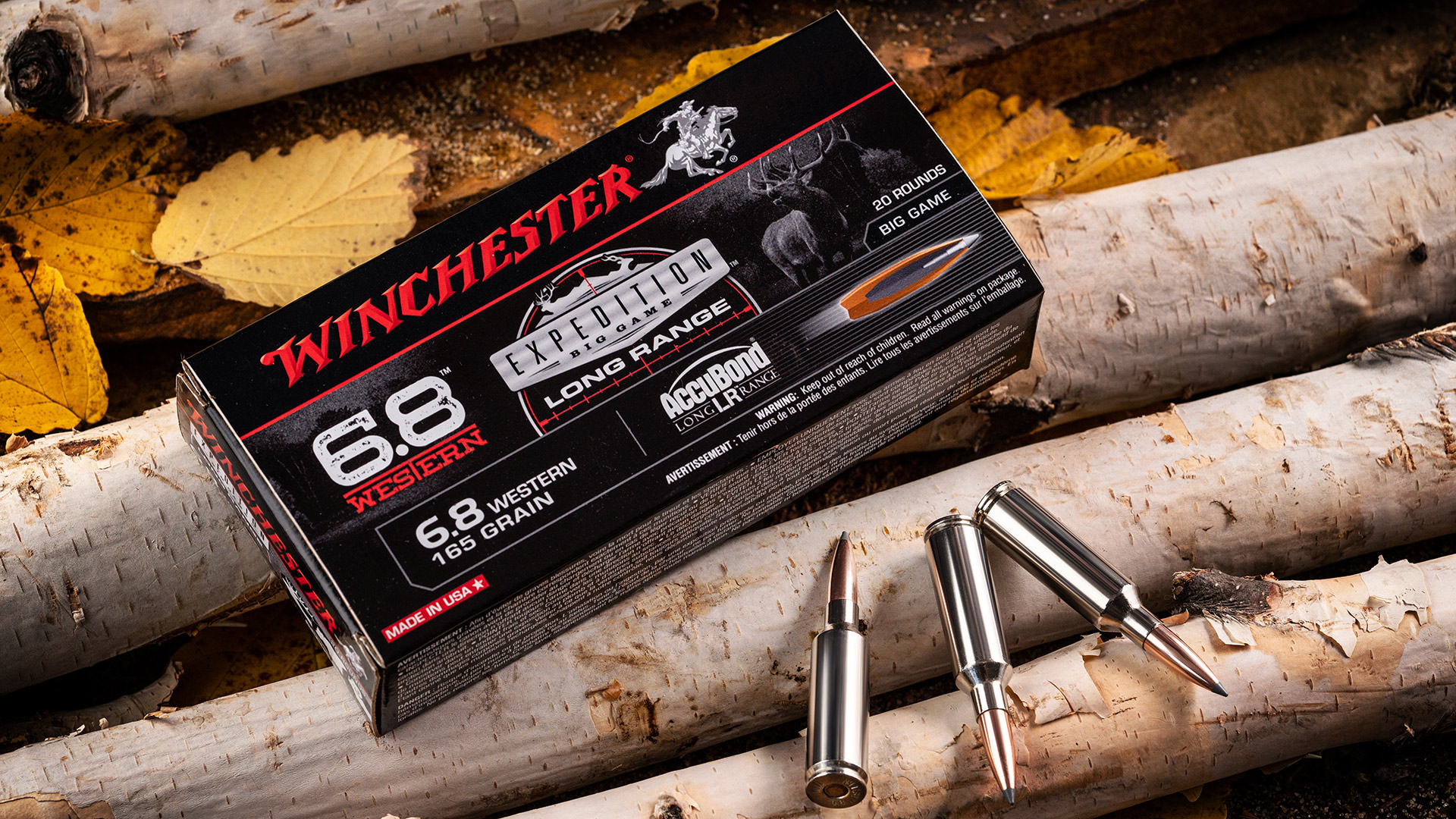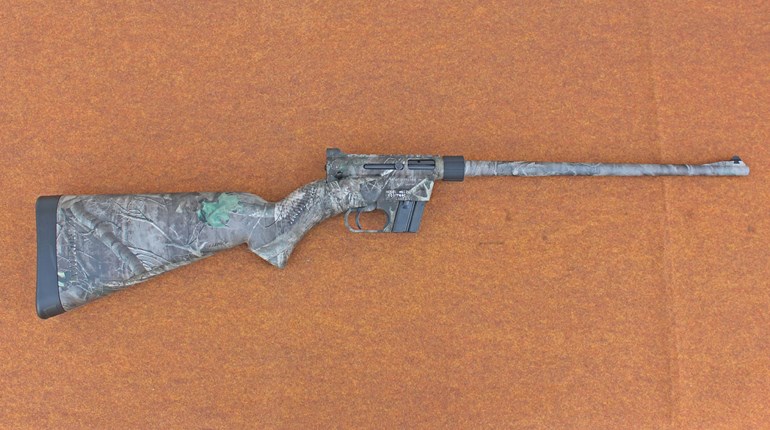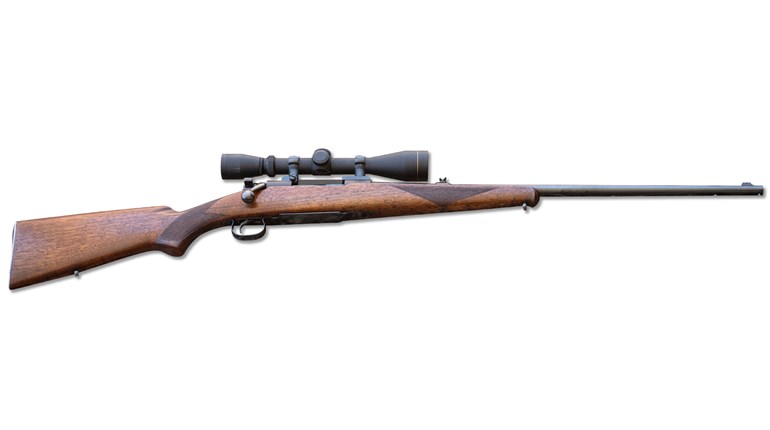
When a brand-new cartridge is announced, there are always “the celebrators”; those who shout “hurrah!” and throw their hats in the air. There are also “the naysayers”; those who claim we’ve never needed another cartridge since the .30-06 and trash-talk the new round all over the web. And then there are the folks who observe with interest, evaluating the new cartridge to see what it’s made of.

In time, most new cartridges dwindle in popularity. Others, like the venerable .270 Winchester and the 7mm Remington Magnum, prove themselves and develop a sturdy reputation for reliability, accuracy and performance. Still others, like the .30-06 Springfield and 6.5 Creedmoor, become superstars, immortalized by their performance and popularity.
Recent decades have seen unprecedented advancements in cartridge design: Accuracy standards have tightened significantly. We can now analyze bullet performance during flight via doppler radar. Bullets are more streamlined and aerodynamic, riflescopes adjust for distance with the twist of a dial, and shooters have learned that they can consistently shoot three times further than they could a quarter-century ago. Cartridge development has indeed reached a new level.

Enter the 6.8 Western
Early in 2020, I was informed of a new cartridge being developed by Winchester and Browning. As a gunwriter, that kind of news always captures my interest, especially since it had been some time since Winchester had announced a new round. A Browning X-Bolt was soon headed my way, chambered in the yet-to-be-announced cartridge. I was excited to see what it could do on the range and in the field. Initial accuracy testing was very promising, and that fall, I was fortunate enough to kill a monster public-land bull elk with the cartridge. Shortly thereafter I watched a buddy harvest a great coues deer buck with the same round, making a perfect first-shot kill at 496 yards.
Almost two years later, the 6.8 Western cartridge has proven itself to be remarkably accurate at the range and truly capable at long distances. Results in the hunting field have been equally impressive. So now the question is, will it last? In 10 years, will the 6.8 be just another has-been cartridge with a tiny corner spot on the gun-store ammo shelves? Or will it reach the respected status maintained by calibers like the .270 Win. and 7mm Rem. Mag.? Might it be capable of stardom like the “ought-six” and Creedmoor? Only time will tell.

Today’s Demanding Arena
Fifty years ago, a cartridge in America simply needed to be capable of grouping under 1.5 inches at 100 yards, shooting fast (flat) enough to enable a dead-on hold to 250 yards, and hitting hard enough to kill a deer or elk. Meet those requirements and you had an all-American cartridge. Not so today.
Today in America, a cartridge must be capable of shooting long, aerodynamic, heavy-for-caliber projectiles that carry energy and velocity way out yonder. It must boast accuracy the old-time riflemen only dreamed about; if it won’t shoot into .75-MOA or less it’s going to get dumped along the side of the road. And it’s got to look cool. Meet all these requirements and you just might have a popular new American cartridge.
That in mind, let’s compare the four proven cartridges I’ve mentioned against the 6.8 Western. We’ll look at four practical elements:
Accuracy: I’ll give a subjective analysis here, based on 3½ decades of shooting experience.
Velocity: Here I’ll provide muzzle velocity in feet per second (fps) as well as velocity at 1,000 yards.
Aerodynamics: I’ll cover G1 ballistic coefficient (BC) numbers (higher is better), drop (which illustrates a cartridge’s ability to carry velocity and energy) and wind drift (wind-bucking ability).
Estimated Maximum Lethal Range: To attain this number I’ve simply looked at the maximum distance a bullet maintains 2000 or more fps of velocity. Some bullets will expand adequately at lower velocities, but we knowthat almost any hunting bullet will expand nicely at 2000 fps and faster. So, I’ve chosen that as my minimum velocity threshold. Yes, you can almost certainly hit a game animal at farther distances than those shown. But I’ve seen big game shot perfectly at long range when velocity was not adequate and the bullets did not expand. The outcome was not desirable.
*Author’s Note: These numbers are for comparison’s sake only. If you plan to shoot at game at extended ranges, do your research and learn exactly what your bullet’s minimum expansion velocity requirement is. Calculate at what distance your bullet drops below that threshold, and keep shots inside that range.

6.5 Creedmoor
This is the favorite child of modern cartridge design. Originally built for 1,000-yard competitive shooting, the 6.5 Creedmoor is now widely accepted as an awesome hunting round as well, especially for deer-sized game. It has achieved unprecedented popularity due to what might be summed up as it’s “friendly nature”. It’s superbly accurate; with good ammo, most rifles will produce .75-MOA or better accuracy. Aerodynamics are the Creedmoor’s game: barrels are typically rifled with 1:8-inch twist and long, high-BC projectiles are the norm. Recoil is mild. It’s not super fast, which is a double-edged sword; barrel life is superb, but velocity drops below a reliable expansion threshold relatively early. Using long-range ammo, the Creedmoor’s 2000 fps range is just over 600 yards.
.270 Winchester
The .270 Winchester has been an American favorite for nearly a century, and rightly so. It is mild tempered, accurate and shoots superbly flat out to 300 yards or so. It’s great for deer- and pronghorn-sized game, and with premium bullets and careful shot placement, is adequate for elk. Developed long before laser rangefinders were invented, it met the needs of the day by sending light(ish) projectiles downrange as fast as possible, to eliminate the need for hold-over as far out as practical. This necessitated a relatively slow rifling twist rate, around one turn in 10 or 12 inches. This is the lone fact that makes the .270 less capable at long range; those slow-twist barrels don’t stabilize long, high-BC projectiles well. Typical accuracy is in the 1 to 1.5-MOA range, though some rifles will shoot significantly better. With quality hunting ammo, this cartridge maintains 2000 fps velocity to around 600 yards. After that velocity diminishes very quickly.
7mm Remington Magnum
The 7mm Remington Magnum has long been a favorite of Western hunters, providing flat-shooting performance like the .270 Win. on steroids. The 7mm, however, seamlessly made the transition to high-BC bullets, rapidly becoming one of America’s favorite long-range hunting rounds. It’s awesome for all big game, including moose. Barrel life is not awesome, nor is magazine capacity, but this cartridge flat-out gets the job done. Accuracy is as good as the rifle and the ammunition you feed it; most premium-ammo-fed modern rifles will shoot under 1-MOA, and some will shoot much better. Recoil is moderate, and 2000-plus fps velocity superb at around 800 yards.

.30-06 Springfield
This is one of my all-time favorite calibers, and I’m not alone in that sentiment. For well over a century, it’s been America’s favorite go-to cartridge for big game. It served well in both world wars. The .30-06 Springfield is a noble round. It’s not as flat shooting as the .270 or 7mm, but it shoots flat enough and hits significantly harder. Recoil is on the upper end of moderate. But like the .270, most .30-06 barrels lack sufficient twist rate to stabilize long, aerodynamic projectiles. And it doesn’t have quite the powder capacity needed to send heavy, high-BC .30-caliber bullets downrange at significant enough velocities to perform well at very long range. Accuracy is generally in the 1- to 1.5-MOA range (which, back when the round was developed, was incredibly good), though high-end rifles can and often do shoot much better. With good ammo, the .30-06 will stay above 2000 fps to 500-plus yards.

6.8 Western
Since it’s announcement in early 2021, the 6.8 Western has developed an inspiring reputation for accuracy. The cartridge was developed in collaboration by Winchester and Browning, and was initially chambered in Browning X-Bolt rifles. These rifles usually averaged 0.5- to 0.75-MOA accuracy—like I said, inspiring. The round looks good on paper too; not super fast, so barrel life should be good, yet fast enough to carry way out yonder. Standard barrel twist rate is suitable for long, heavy-for-caliber projectiles. Overall cartridge length is 2.995 inches, short enough to chamber in short-action rifle actions, which are slightly faster to cycle and lighter in weight. Typical bullet weights are adequate for any North American game except for the big bears. Recoil is moderate, and with long-range ammo, the round maintains 2000 fps velocity to beyond 800 yards. In the hunting field, the Western has exceled. Though I don’t care to brag about such things, I made the longest hunting shot of my life with the 6.8 on a quartered-away bull elk at dusk. The bull dropped in his tracks to an accurate first-round hit.

Conclusion
Will the 6.8 Western become immortal as an American hunting round? Only time will tell, though in my opinion, it has all the makings. Could it become a superstar like the 6.5 Creedmoor and the .30-06 Springfield? Possibly, though only two hunting cartridges have developed that kind of superpower in history, so it’s not likely. Might it become an American standard, like the .270 Winchester and the 7mm Remington Magnum? I think so. It is accurate, forgiving, hard-hitting and superb at long range. It even has a catchy name. Early in this article we posed the question; “Is the 6.8 Western as good as it sounds?” Why yes, yes it is.
Comparison Table
Data was collected via manufacturer-advertised BC and velocity numbers, which were then crunched in the author’s Ballistic AE app.
|
Cartridge/Bullet |
G1 BC |
Muzzle Velocity |
Drop at 500 Yards in Inches |
Wind Drift at 500 Yards in Inches |
2000 fps Threshold |
1,000-Yard Velocity |
|
6.5 CM/Hornady 143-gr. ELD-X |
0.623 |
2700 fps |
42” |
4.4” |
615 yds
|
1618 fps |
|
6.5 CM/Federal Premium 130-gr. Terminal Ascent |
0.532 |
2800 fps |
40.4” |
5.1” |
590 yds |
1537 fps |
|
.270 Win./Nosler 130-gr. AccuBond |
0.435 |
3060 fps |
35.3” |
5.7” |
620 yds |
1483 fps |
|
.270 Win./Nosler 130-gr. Partition |
0.416 |
3060 fps |
35.8 |
6.0” |
590 yds |
1430 fps |
|
7mm Rem. Mag./ Federal Premium 155-gr. Terminal Ascent |
0.586 |
3000 fps |
33.7” |
4.1” |
795 yds |
1777 fps |
|
7mm Rem. Mag./Hornady 162-gr. ELD-X |
0.631 |
2940 fps |
34.6” |
3.8” |
805yds |
1807 fps |
|
.30-06 Sprg./Nosler 180-gr. AccuBond |
0.507 |
2700 fps |
44.5” |
5.7” |
495 |
1432 fps |
|
.30-06 Sprg./Hornady 178-gr. ELD-X |
0.552 |
2750 fps |
41.6” |
5.0 |
580yds |
1539 fps |
|
6.8 Western/Nosler 165-gr. AccuBond LR |
0.620 |
2970 fps |
33.9” |
3.9” |
820 yds |
1812 fps |
|
6.8 Western/ |
0.564 |
2875 fps |
37.4” |
4.6” |
680 yds |
1648 fps |



































